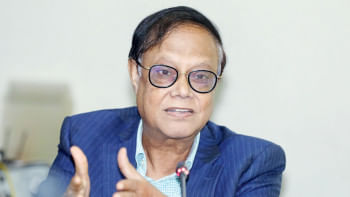Meena mania!
 Like many children of the 90's, Meena has been a happy part of my childhood. I remember vividly, during my kindergarten days, what Meena meant to me, how the title song, “Ami baba-maer shot o adorer meye; Ami boro hoi shokoler bhalobasha niye; Amar duu chokhey onek shopno thake…” used to motivate me, used to make me realise how precious I am to my parents. As if every message of Meena was only meant for me.
Like many children of the 90's, Meena has been a happy part of my childhood. I remember vividly, during my kindergarten days, what Meena meant to me, how the title song, “Ami baba-maer shot o adorer meye; Ami boro hoi shokoler bhalobasha niye; Amar duu chokhey onek shopno thake…” used to motivate me, used to make me realise how precious I am to my parents. As if every message of Meena was only meant for me.
The character Meena is a girl child of age 9 and she continues to be ever young. This year on September 24, she turned 21. The first episode of Meena series, “Count your Chickens,” was telecast on BTV in December 1992. Mostofa Monwar, Shishir Bhattyacharja and other Bangladeshi artists were involved in its innovation; a number of researches, drawings of characters, interviews and voice-selection processes were carried out to dig up the Meena, we fell in love with. Even today children feel the same way about Meena like the children of the 90s.
Meena has become a popular tool of social change because of her friendliness, curiosity on social concerns and effort to make lives better for people around her, starting from her own family. From her we get many positive perceptual inspirations on how a girl child can contribute to serve for her own family as well can lead to the entire community's wellbeing. Her character is a beautiful reflection of that very idea, “When you educate a girl, a mother, you educate the entire generation!”
Watching her series, we have also got to learn the joy of participation in the school, which is an essential element to bring about children's mental expansion and expression. In the episode “Count your Chickens,” Meena has demonstrated to us the necessity of seeking education where Meena's father refused to send her to school and that makes Meena sad; so she used to send Mithu (her parrot) to go to the school and learn some lessons for her and then Mithu finally taught her counting.
One morning, she counted her chickens and then she found out that one of her chickens was missing. That helped her family find the missing chicken and the family also got convinced about the importance of seeking primary education. Meena's father then understood that if he sends Meena to school, she can help better in everyday household works. So, here lies an example of why a girl child deserves education.
It motivates children, even now, to love their books, teachers, studies, mates, colours and everything about school. Children who had never been to school before, this episode drives their spirit into the school and makes them crave for seeking education!
Besides, for the past 21 years, other episodes of Meena have been tutoring children about maintaining basic hygiene like washing hands with soap before having meals and using proper sanitary latrines, equal distribution of food between boys and girls as both have the same rights of care from their parents, say-No-to-dowry, etc.
Meena carries the challenges faced by girl children in different series that reflect the contemporary dilemma of most Bangladeshi girls.
Ttoday, she is not only a household name in Bangladesh; she has become a native girl of other South Asian SAARC countries: Bhutan, India, Nepal, Pakistan and Sri Lanka. She is recognised under the banner of UNICEF.
UNICEF, through Meena, has successfully reached both the rural and urban audience. Now, it should sit with the press, TV and radio stations to discuss the production of more new Meena-series in order to reach the contemporary crisis of the urban society today.
A girl child is a daughter, a future mother, an independent flag of change herself. She is the mirror, the primary teacher, of the society! Perhaps that is what the cartoon character Meena and girls/women like her stand for. Even after growing older, now, Meena is still a name in my blood as it reminds me how much goodness and motivation I had absorbed from her.
The writer is Editorial Assistant at The Daily Star.

 For all latest news, follow The Daily Star's Google News channel.
For all latest news, follow The Daily Star's Google News channel. 



Comments